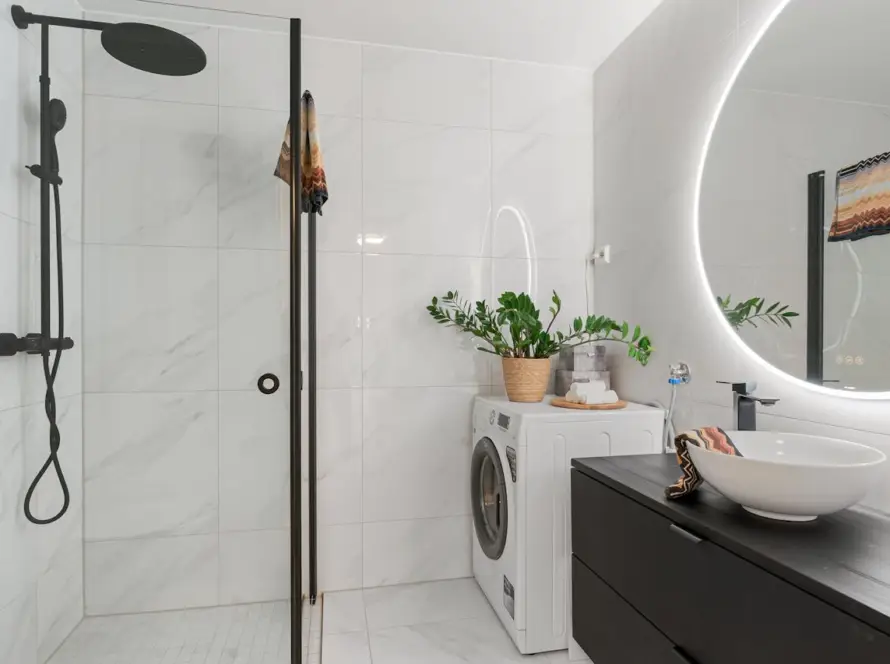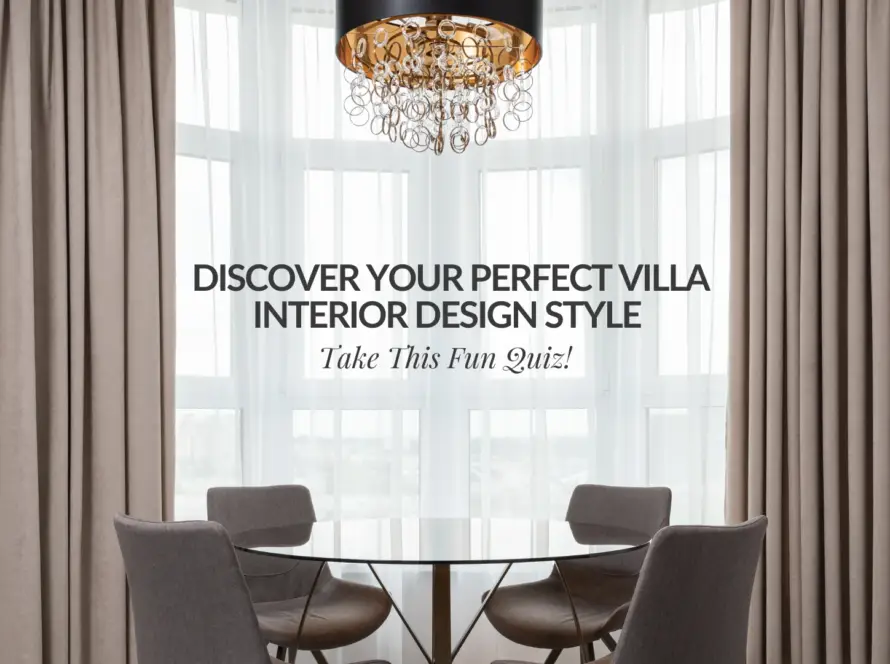A simple living room interior design can transform your home into a stylish and inviting space without overwhelming it with excessive decor. Whether you prefer a modern minimalist approach or a warm, cozy atmosphere, simplicity in design offers elegance, comfort, and functionality. In this guide, we’ll explore how to achieve a stunning yet simple living room interior design while incorporating smart space-saving ideas and timeless aesthetics.

The Beauty of Simple Living Room Interior Design
1. Choosing the Right Color Palette
Color plays a crucial role in setting the tone and atmosphere of your living room. When it comes to living room interior design, the right color palette can make all the difference. Neutral tones like white, beige, gray, and soft pastels create an airy, open, and spacious feel, making the room look larger and more inviting. These colors serve as a calming backdrop, allowing other design elements to shine.
If you’re looking to add a bit of contrast while maintaining a simple aesthetic, deep hues such as navy blue, forest green, or charcoal gray can bring depth and sophistication to the space. These richer tones work wonderfully when paired with lighter, neutral colors to create balance and harmony in your living room interior design.
Pro Tip: Consider incorporating accent walls or textured wallpapers to add a subtle touch of elegance. This will bring a personalized touch to your living room while keeping the overall design cohesive and simple. Explore our interior color guide for more inspiration on how to choose the perfect colors for your living room.
2. Minimalist Furniture Selection
Choosing the right furniture is essential for creating a functional and stylish living room. In living room interior design, less is often more, and minimalist furniture is key to achieving that perfect balance. Opt for pieces that are not only functional but also contribute to the overall aesthetic without overcrowding the space. Multifunctional furniture, such as a sleek sofa bed or a coffee table with hidden storage, is ideal for maximizing space while maintaining a clean, uncluttered look.
The goal of minimalist furniture in living room interior design is to prioritize simplicity, clean lines, and practicality. Furniture with neutral tones, such as whites, grays, or earth tones, will seamlessly blend into your living room, ensuring that the room feels open and airy. Avoid bulky pieces that can dominate the room and instead, choose pieces that complement the overall design and enhance the room’s flow.
By selecting minimalist furniture, you can create a serene and clutter-free environment that makes your living room feel larger and more inviting. Focus on quality over quantity, and choose furniture that is both stylish and functional to elevate your living room interior design.
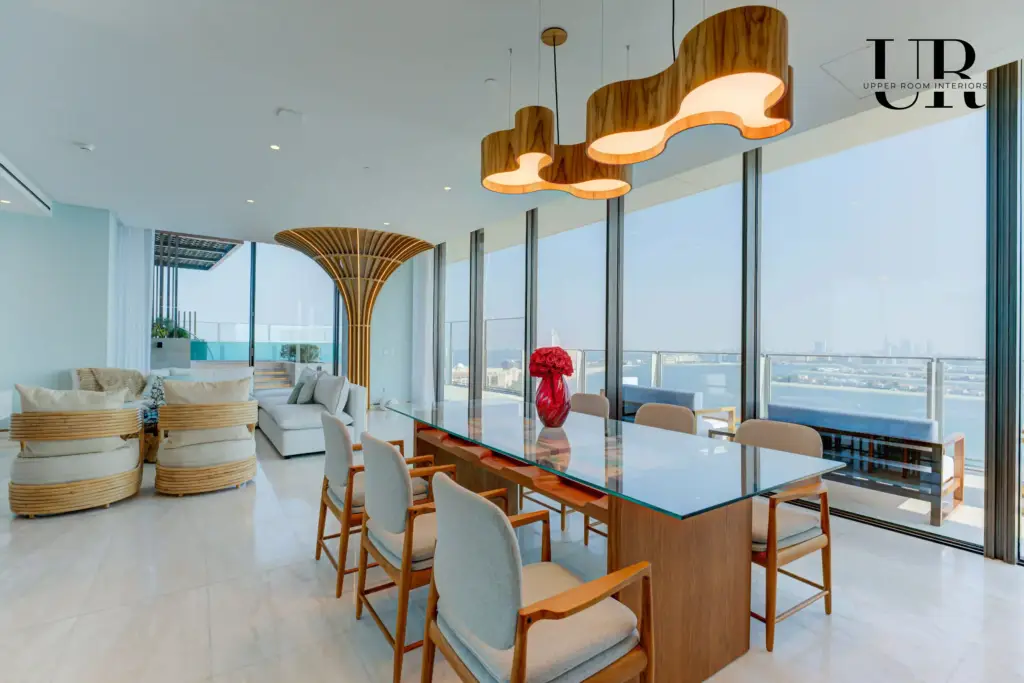
3. Smart Lighting for a Cozy Ambiance
Lighting plays a crucial role in setting the mood and ambiance of your living room, especially in living room interior design. The right lighting can transform a space from dull and uninspiring to warm and inviting. A well-lit living room not only enhances the visual appeal of your space but also contributes to the overall atmosphere, making it feel more comfortable and relaxing.
For an ideal living room interior design, a combination of ambient, task, and accent lighting is essential. Ambient lighting, like overhead ceiling lights or recessed lighting, provides general illumination, ensuring that the room is bright and functional. Task lighting, such as table lamps or reading lights, adds focused light where it’s needed most. Accent lighting, such as wall sconces or decorative floor lamps, helps create a cozy and intimate atmosphere, highlighting the room’s best features.
Consider incorporating smart lighting solutions that allow you to adjust the brightness and color temperature to suit different activities or moods. For example, you can use dimmable lights for a relaxed evening or brighter lighting for daytime activities. Smart lighting systems, such as voice-controlled lamps or automated lighting that adjusts with time of day, are becoming increasingly popular in living room interior design for their convenience and modern touch.
By carefully choosing the right lighting elements and incorporating smart technology, you can create a cozy, functional, and stylish living room interior design that caters to both form and function.
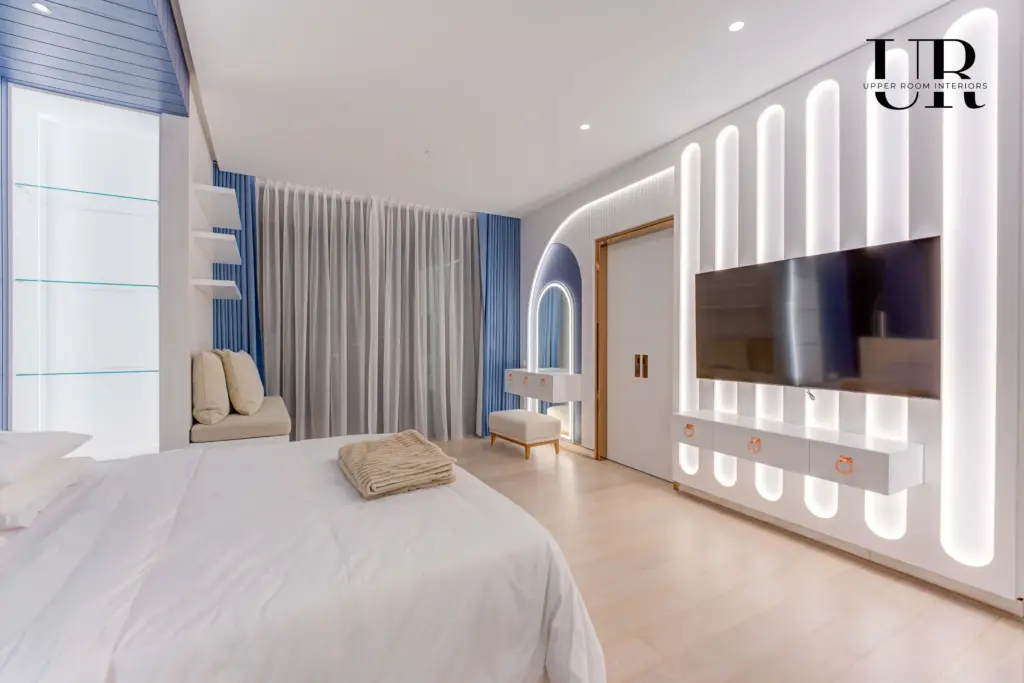
4. Declutter and Organize
A simple living room interior design thrives on minimalism, and the key to achieving this is through effective decluttering and organizing. A tidy, well-organized space creates a sense of calm and allows the design elements to shine without being overwhelmed by unnecessary items. The first step in creating a minimalist living room is to remove anything that doesn’t serve a functional or aesthetic purpose.
Storage solutions play a vital role in maintaining a clutter-free living room. Invest in storage units like floating shelves, which not only offer a place to store books, decor, or electronics but also add a modern touch to your living room interior design. Concealed cabinets are another great option for hiding away items that you want to keep out of sight but still easily accessible. These hidden storage spaces help maintain a clean, uncluttered look while still allowing you to store the essentials.
Stylish baskets are another excellent choice for keeping your living room organized. They can be used to store everything from blankets to remote controls, and they add a natural, rustic element to your living room interior design. Opt for woven baskets or storage bins in neutral tones to complement the minimalist aesthetic of your living room.
Another effective way to ensure your space remains tidy and functional is by investing in quality furniture with built-in storage. Sofas with hidden compartments or coffee tables with storage can help reduce clutter without compromising on style. Furniture pieces with dual functionality not only enhance the overall design but also provide practical solutions to keeping your living room organized.
By incorporating smart storage solutions and organizing strategies into your living room interior design, you can maintain a clean, inviting space that feels open and spacious, allowing you to fully enjoy the beauty of a minimalist design.
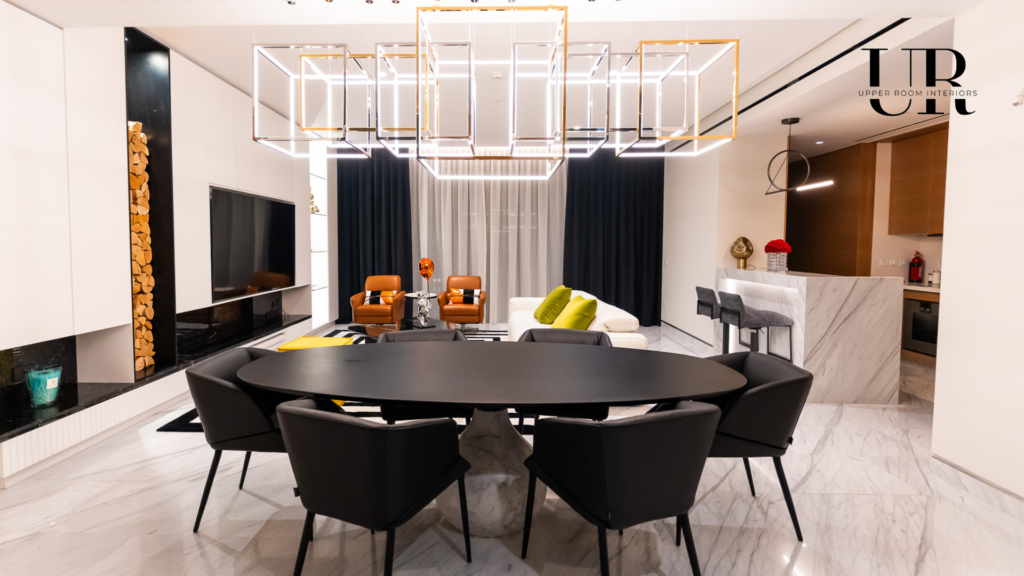
5. Bringing Nature Indoors
Incorporating natural elements into your living room interior design not only enhances the aesthetic appeal of the space but also creates a sense of calm and tranquility. Bringing nature indoors through indoor plants is one of the simplest yet most effective ways to achieve this. Plants add life and vibrancy to your living room, making it feel fresh, inviting, and connected to the outdoors.
For a seamless living room interior design, choose low-maintenance plants that thrive indoors, such as snake plants, pothos, or succulents. These plants require minimal care while still providing the visual benefits of greenery. Placing them strategically around the room, such as on shelves, coffee tables, or windowsills, can add dimension and balance to your space.
In addition to plants, other natural elements like wooden furniture, woven baskets, and stone accents can complement your living room interior design. These materials not only bring texture and warmth but also create a harmonious, organic atmosphere that feels grounded and connected to nature.
Bringing nature indoors is also a great way to improve air quality, providing a healthier environment for your family. Consider adding plants that purify the air, such as peace lilies or spider plants, for both aesthetic and health benefits.
With the right combination of indoor plants and natural materials, you can create a living room interior design that feels serene, refreshing, and beautifully connected to the natural world.
Learn more about the benefits of indoor plants from Better Homes & Gardens
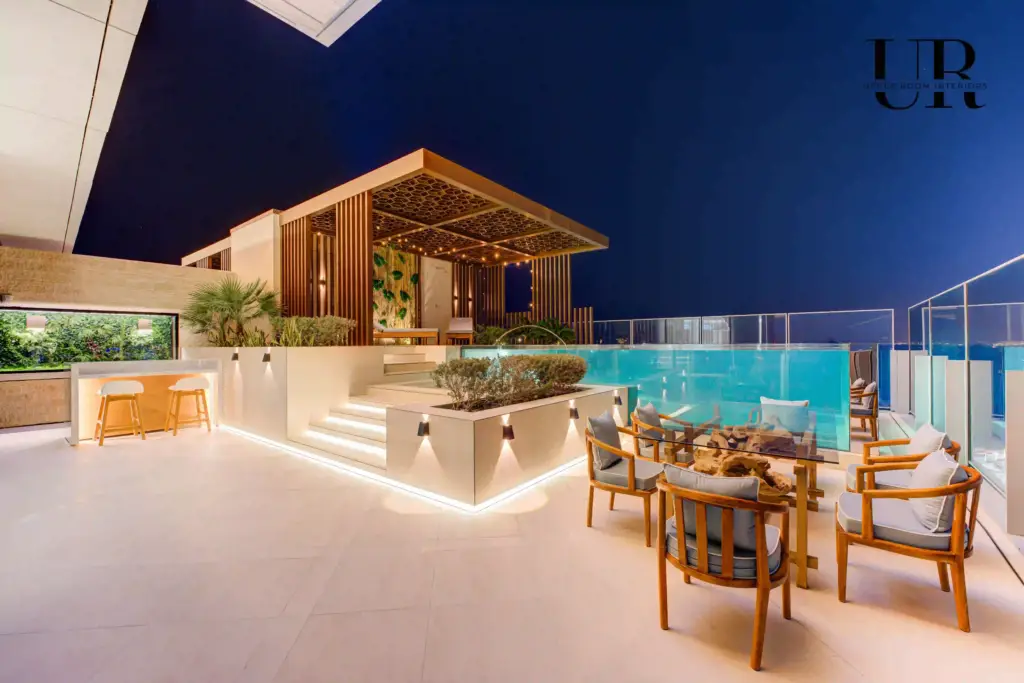
6. Simple Yet Elegant Decor
When it comes to living room interior design, simplicity is key. Rather than cluttering your space with excessive decor, focus on a few carefully selected statement pieces that will enhance the overall aesthetic without overwhelming the room. Simple yet elegant decor is all about creating a harmonious and stylish environment that feels welcoming and refined.
One of the best ways to elevate your living room interior design is by adding a large mirror. A mirror not only serves as a functional piece but also helps to make the room feel bigger and more spacious. It reflects light, brightening up the space and adding an elegant touch to your living room. Position the mirror strategically to reflect natural light or to highlight a feature wall for added impact.
A minimalist art piece can also play a significant role in enhancing your living room’s decor. Choose artwork that reflects your personal style while complementing the overall color scheme of the room. Whether it’s a sleek modern painting or a simple geometric print, a well-placed piece of art can inject personality and sophistication into your living room interior design.
To add warmth and comfort, incorporate cozy throw pillows and rugs. These elements can create a more inviting atmosphere while tying the entire look together. Choose cushions and rugs in neutral tones or soft textures that complement your existing furniture and color palette, creating a relaxed yet stylish vibe.
By focusing on a few key decor pieces, you can maintain a clean, minimalist living room interior design that feels both elegant and cozy, without overcrowding the space.
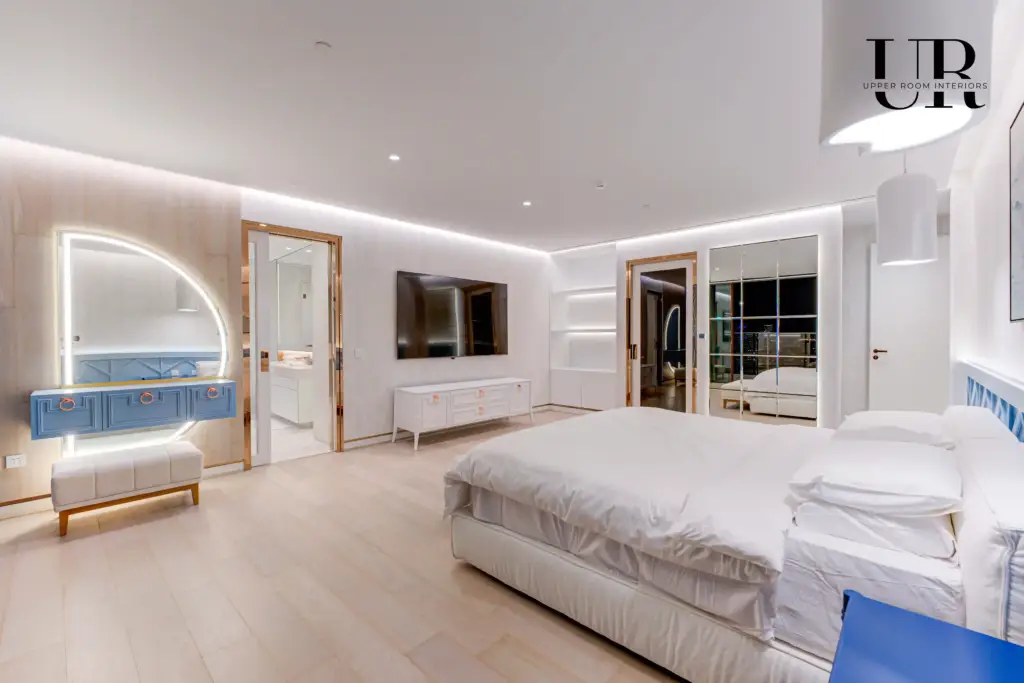
7. Enhance Your Space with Smart Technology
Integrating smart technology into your living room interior design can significantly elevate the functionality and convenience of the space. In today’s modern living rooms, smart home devices not only provide comfort but also seamlessly blend into the design, making your living space both stylish and highly functional.
Smart lighting is one of the most popular and effective ways to enhance your living room interior design. With smart bulbs, you can easily adjust the brightness, color temperature, and even create mood lighting based on the time of day or activity. Voice-controlled lighting systems, like those connected to Alexa or Google Home, can also be integrated into your living room for added convenience and ease of use.
Another way to incorporate smart technology into your living room interior design is through automated window treatments. Smart blinds or curtains can be set to open or close based on the time of day, the amount of sunlight, or even remotely controlled from your smartphone. This adds a modern touch to your space while also improving energy efficiency by helping to regulate natural light and temperature.
Smart home assistants, such as voice-activated devices, can be integrated into the design to control lighting, music, and even temperature settings. These devices not only improve the overall functionality of your living room but also add a sleek, futuristic vibe to your interior design.
Finally, consider adding smart entertainment systems like smart TVs, sound systems, and streaming devices to enhance your living room’s entertainment experience. These devices can be discreetly incorporated into your living room interior design, minimizing clutter while keeping the room technologically advanced.
By incorporating smart technology, you can enhance both the form and function of your living room interior design, creating a space that is modern, efficient, and comfortable.
Explore smart home interior design tips.
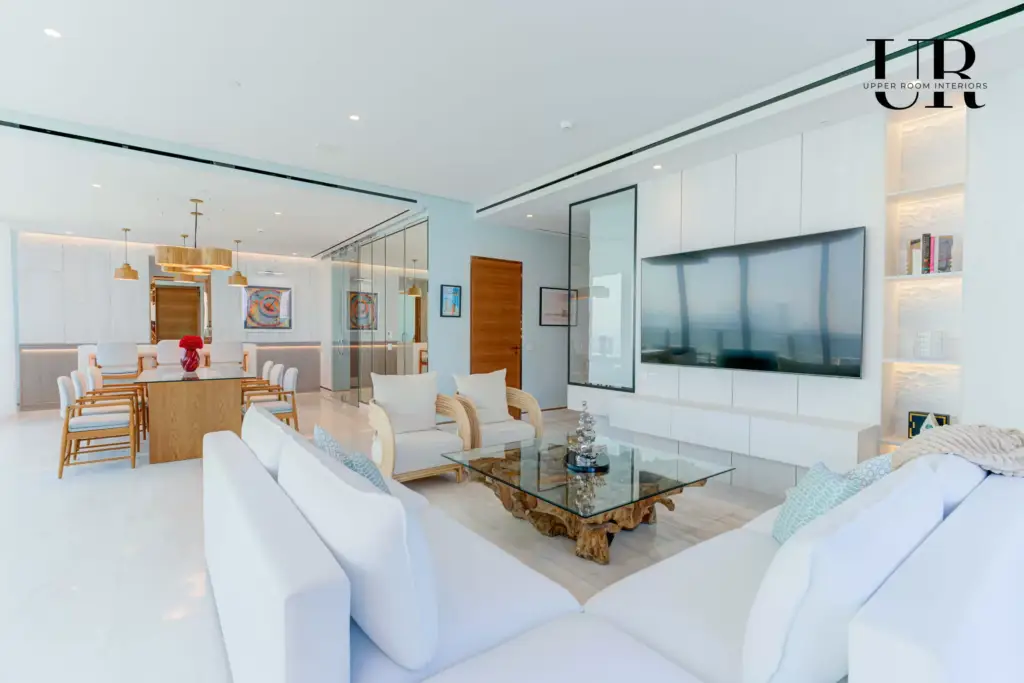
8. Create Defined Zones Within the Room
In living room interior design, creating defined zones within the space can help improve both functionality and flow. By dividing your room into specific areas for seating, reading, dining, or entertainment, you can ensure that each activity has its own dedicated space without feeling cramped or cluttered. This technique works especially well in larger living rooms but can also be effective in smaller rooms where you want to maximize the available space.
Use rugs, furniture placement, and lighting to delineate different zones. For example, a rug can anchor the seating area, while pendant lights or table lamps can draw attention to a reading nook. In a multifunctional space, consider furniture pieces that can easily be moved or rearranged to suit your needs, such as modular sofas or folding tables.
By creating distinct zones within your living room interior design, you can make the space more adaptable, functional, and visually appealing.
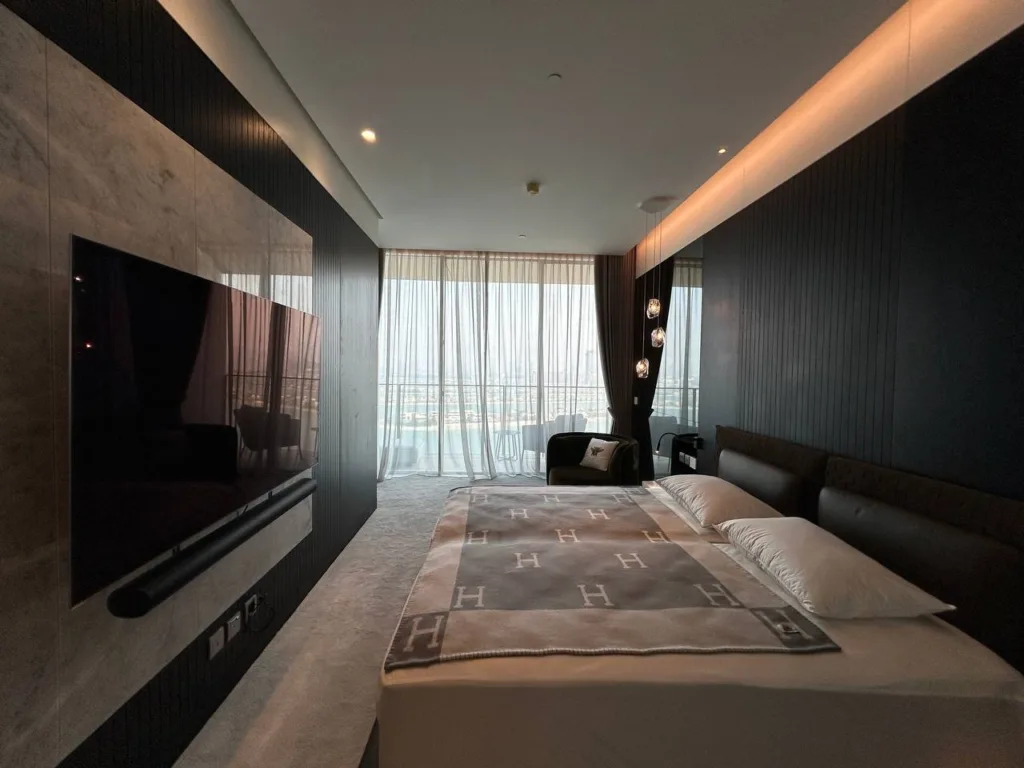
9. Add Personal Touches
Lastly, one of the best ways to truly make your living room interior design feel like home is by adding personal touches. Incorporate your unique style through decor, artwork, and keepsakes that reflect your personality and lifestyle. Whether it’s a family heirloom, a collection of travel souvenirs, or a favorite piece of artwork, personalizing your living room makes the space feel more welcoming and meaningful.
When adding personal elements, be mindful not to overdo it, as this can lead to visual clutter. Instead, choose a few carefully selected items that contribute to the overall aesthetic while also adding character to your living room. With the right balance, personal touches can make your living room interior design feel uniquely yours.
Final Thoughts
A simple living room interior design is all about finding the perfect balance between functionality and aesthetics. By following these practical steps, you can create a space that feels inviting, stylish, and clutter-free.
Looking for professional guidance? Contact us today for expert interior design services tailored to your needs.



